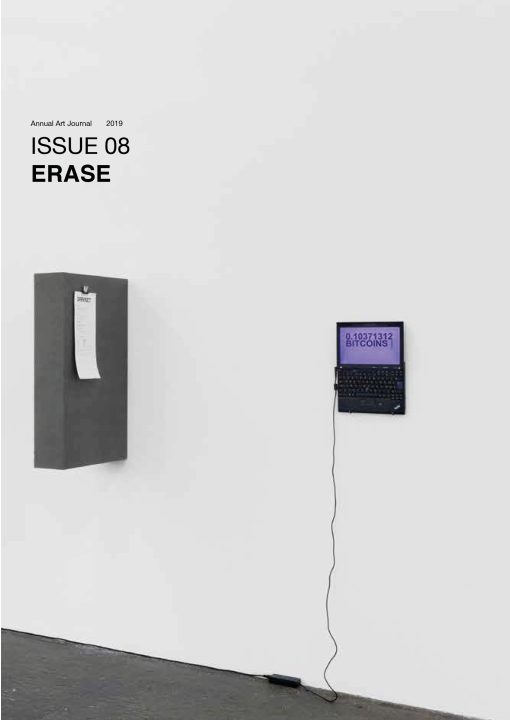The 2019 issue is Erase.
The concept of ‘erase’ has informed much of 20th-century art, philosophy and cultures through either a palimpsestic re-writing/re-reading of issues, confrontation through the ideology of war or through forgetting. These practices speak directly to identity formation, cultural/self-representation and the manner in which the future is factualised.
But humanity is driven by a constant need to erase and this is foregrounded by three perspectives.
First, to erase is to existentially oppose memory or the memorialisation of that which is/was present. History’s pre-occupation is not so much with what is/was present but that which is absent in the past. In these pre-occupied notions of archiving, there is a fundamental annihilation1 of any form of representation of humans and beings of their rich and diverse manifestations by not acknowledging their presences: Their absences promote stereotypes. The last century provided and continues with thick scholarship around identities, race, genders, geographies, languages and sexualities. These inform and direct contemporary culture, art and education.
Secondly, in the current era, where the digital reigns supreme, one is memorialised and traced through Google histories or IP addresses, enabling market to demographic profiling for purposes of framing identities, publics and communities. This has led to market and political forces to shape, manage and control people’s decision-making. With this, the right of an individual to erase/mask through automated identity control (facial, fingerprint recognition) and encryption technologies such as VPN has become pronounced and an integral part of human digital socialisation. That is, the right to erase/delete not memorialise/archive is at the heart of legal debates around data protection today.2
Thirdly, in visual art, to erase is a method of consistently bringing to light a new perspective or dimension. In art, distancing oneself from the need to erase (to forget) is pertinent in unleashing ways of imagining the world and bringing to the forefront ideas deeply buried in the human conscience.
These perspectives form the basis of the current ISSUE. Looking through the prism of art, politics, power, philosophy, and reality-visual culture and ideas, these curated essays, interview and exhibition, consider the manner in which the notion to easily erase or delete can be seen to relativise our understanding of contemporary society. Moreover, they provide an avenue to the reader to consider the emergence of new cultural myths and forms and how these may manifest in contemporary art and visual culture.


